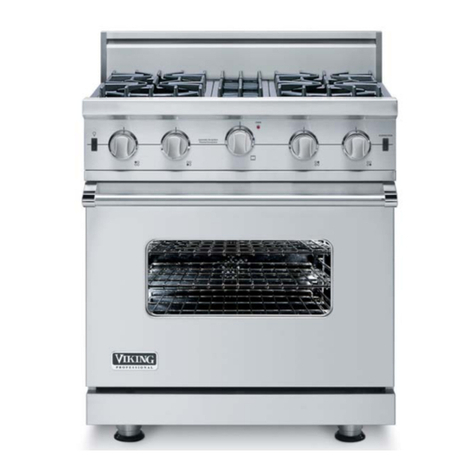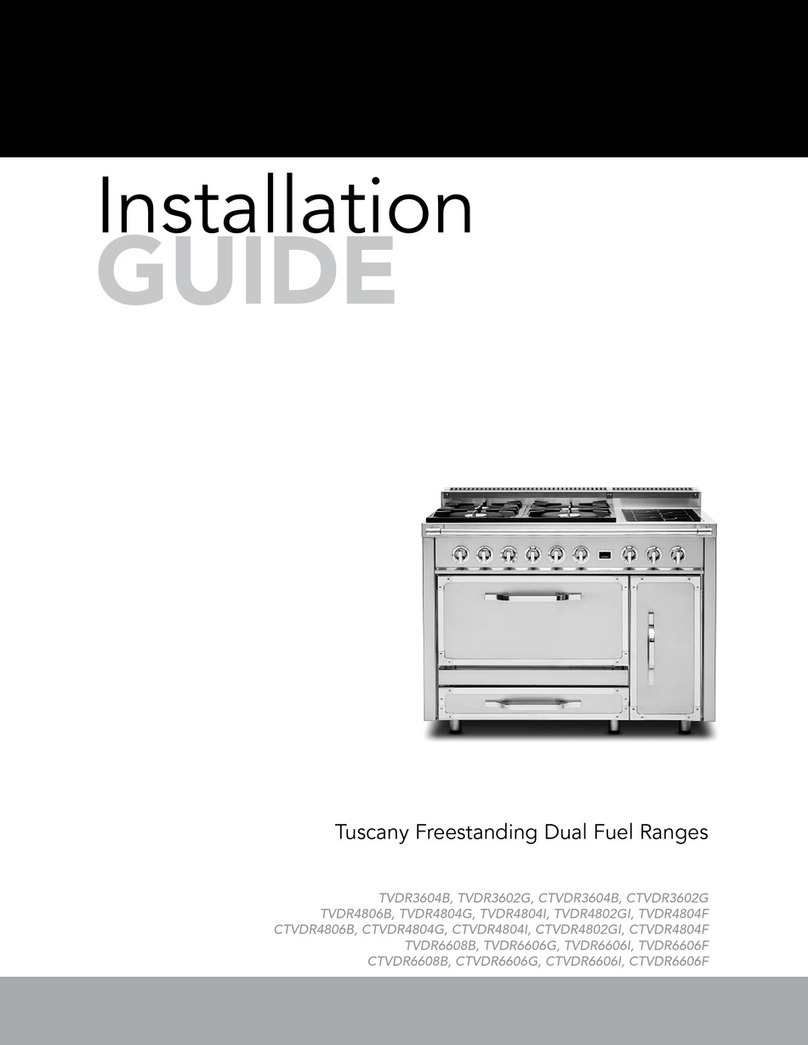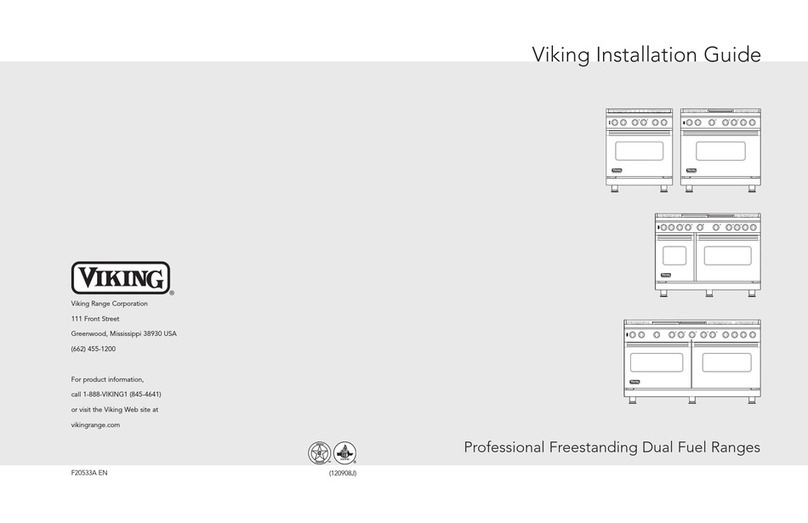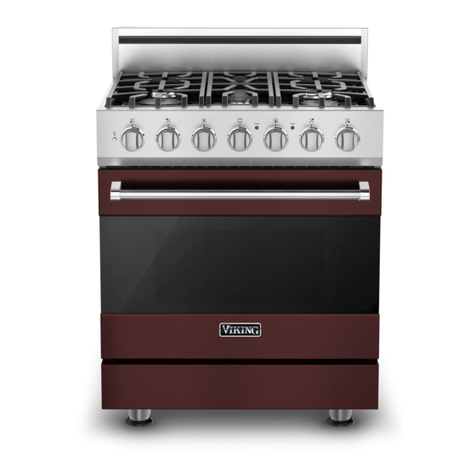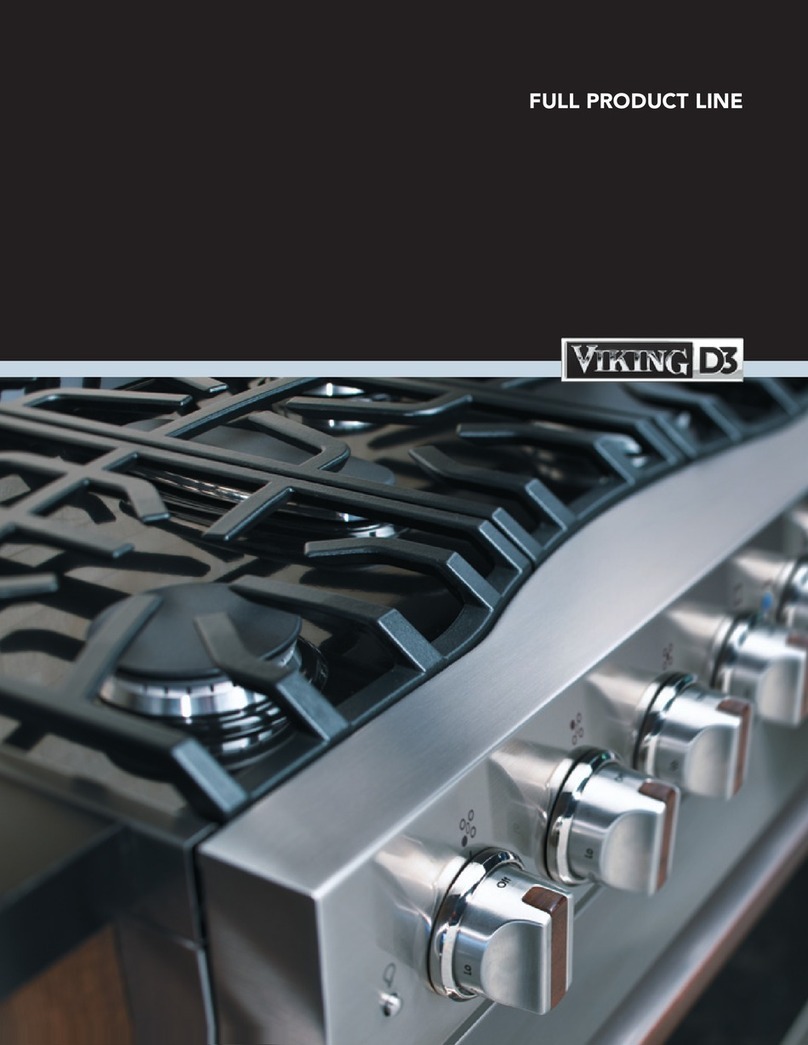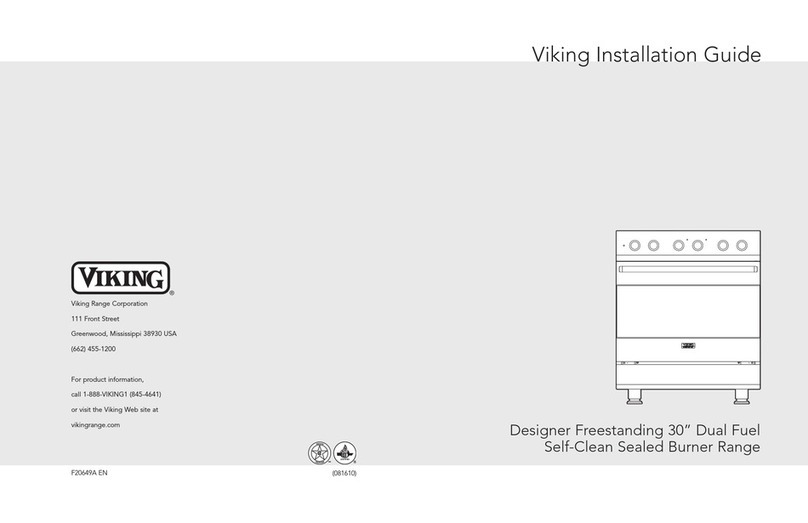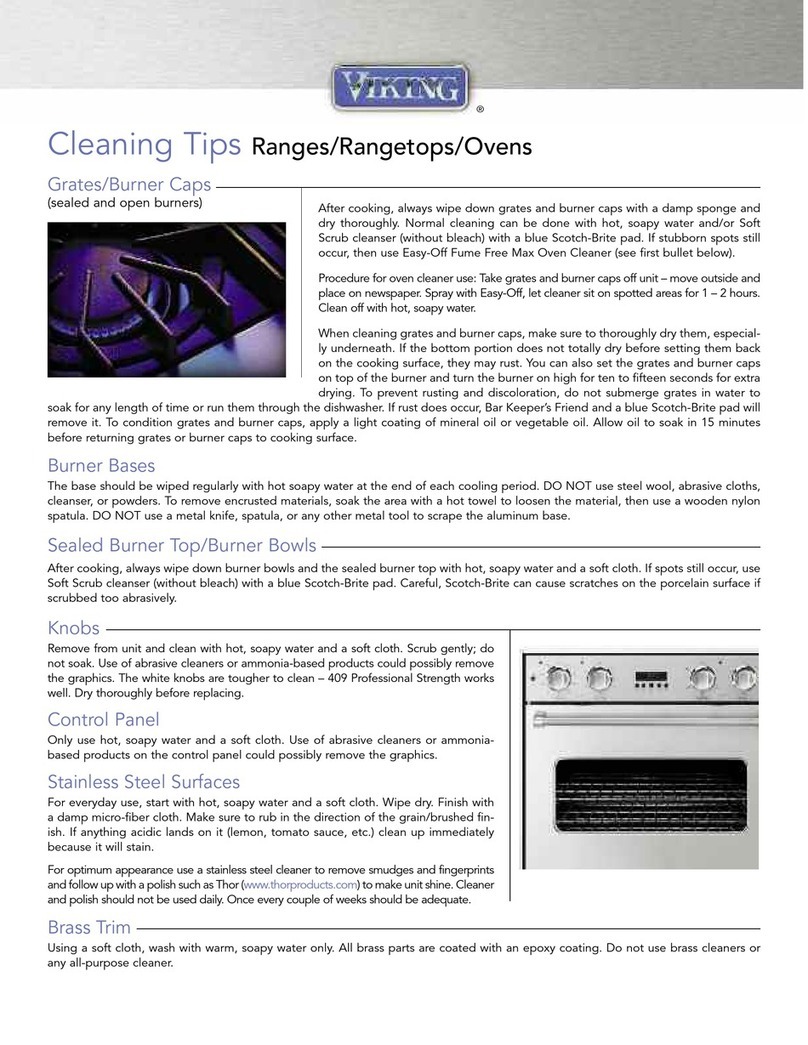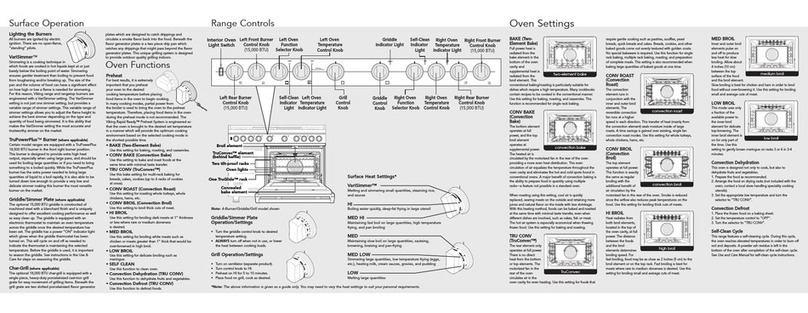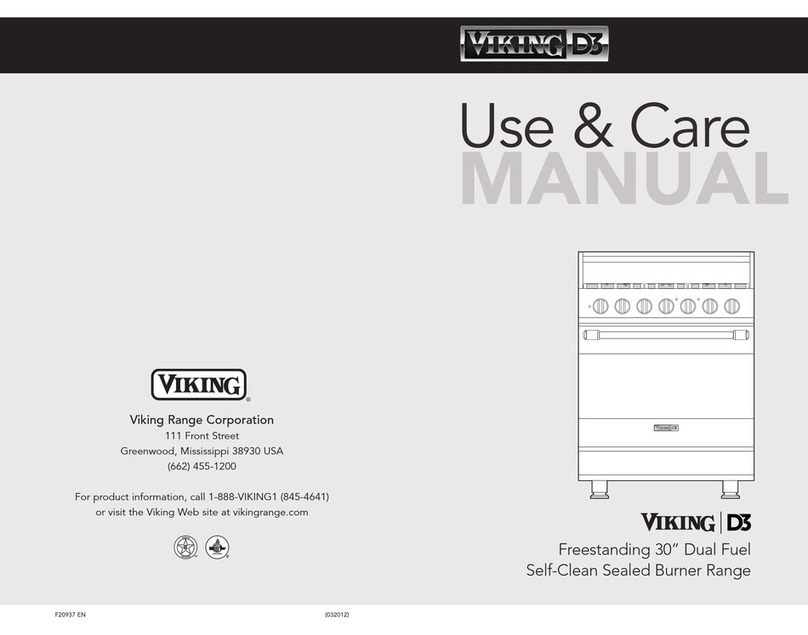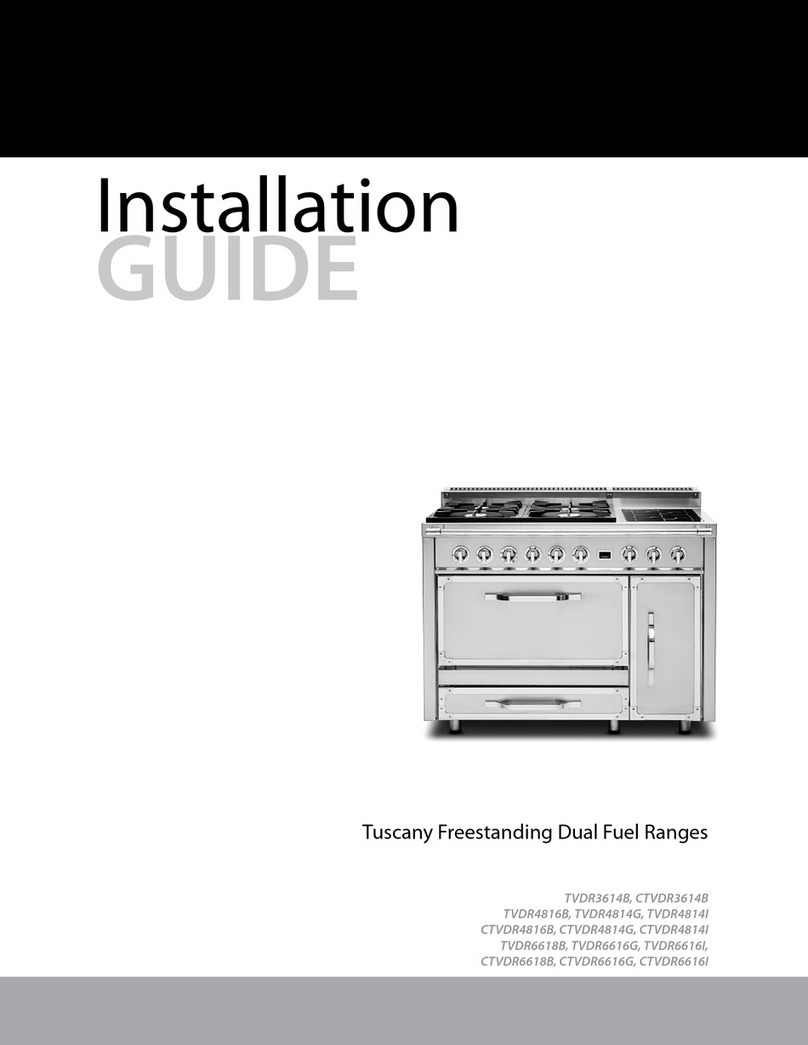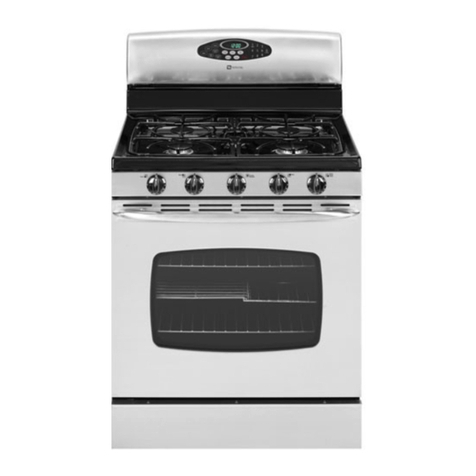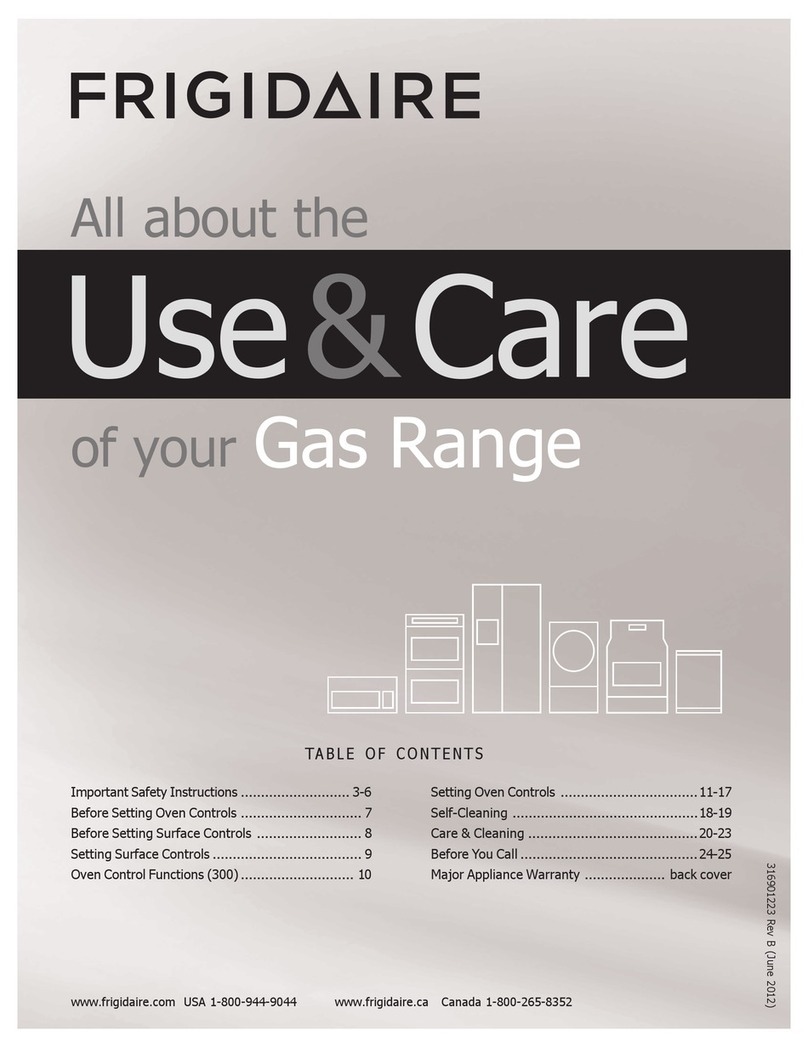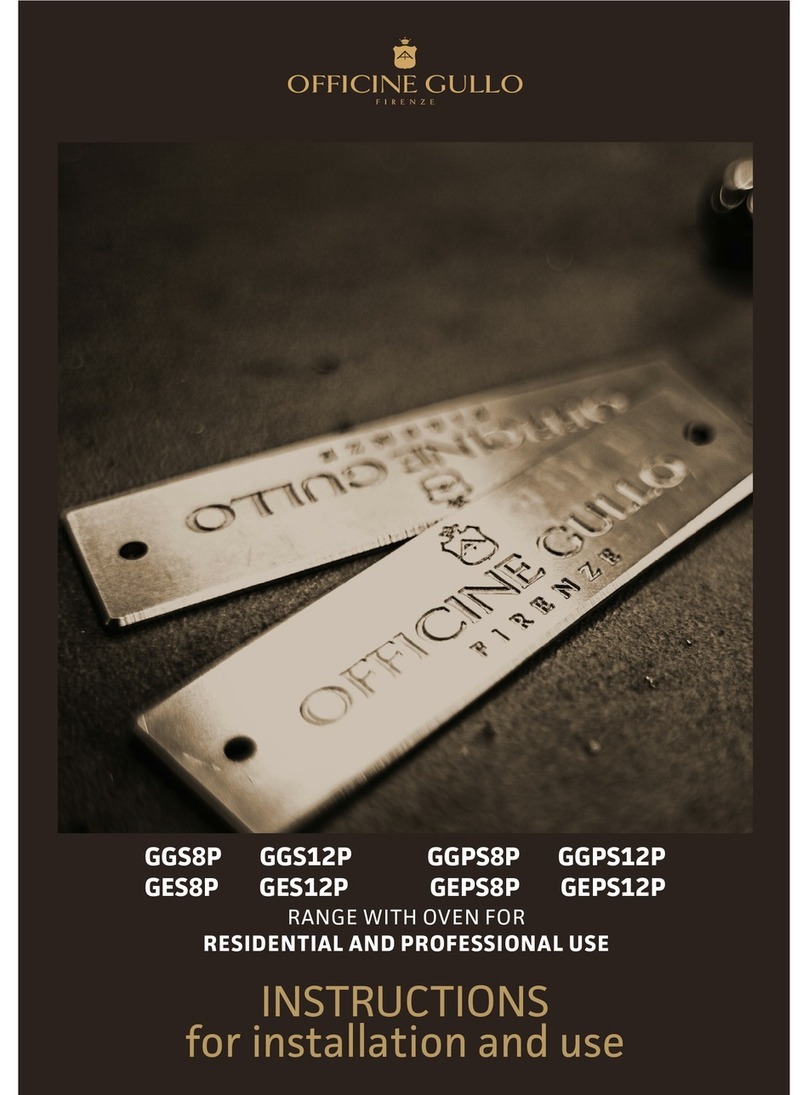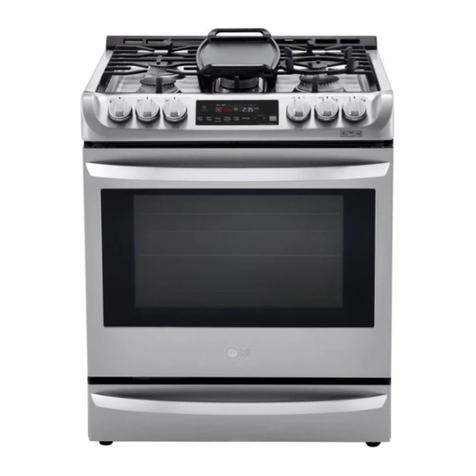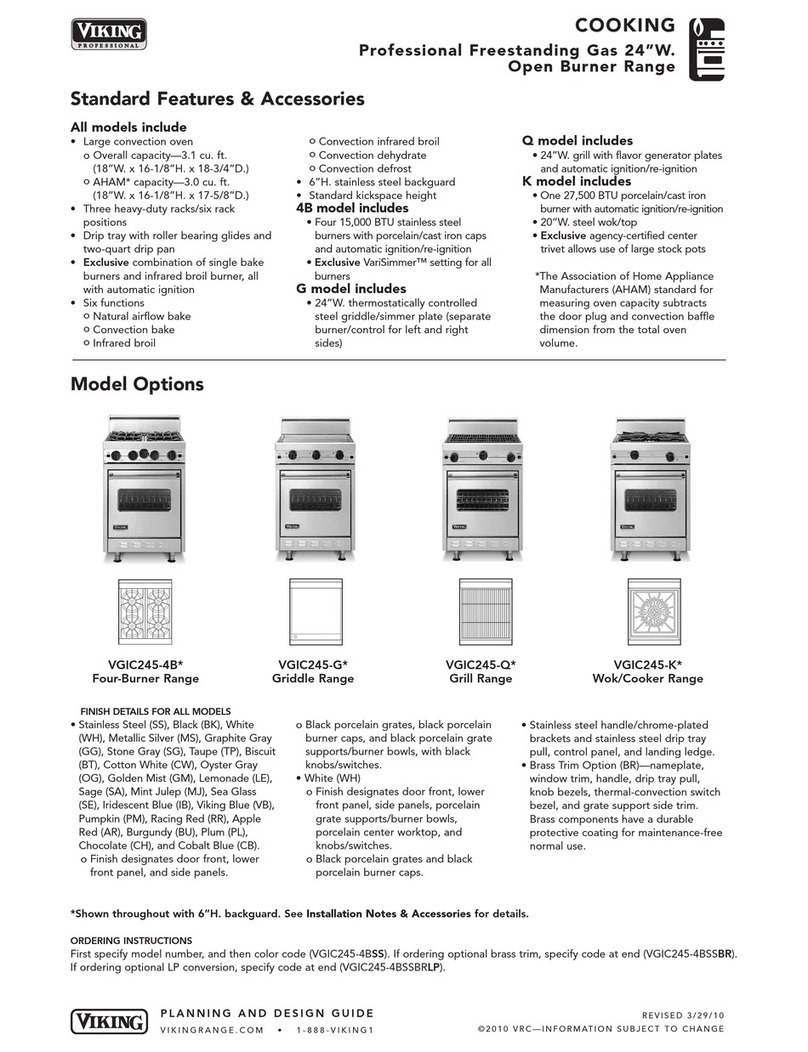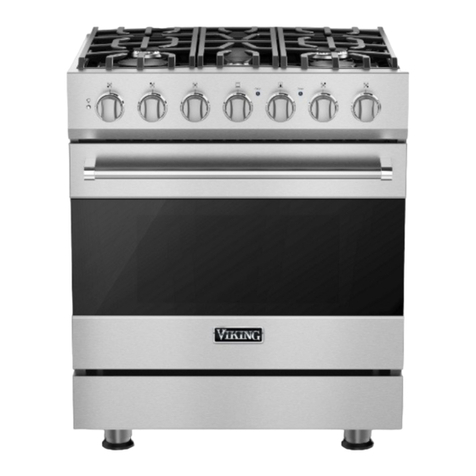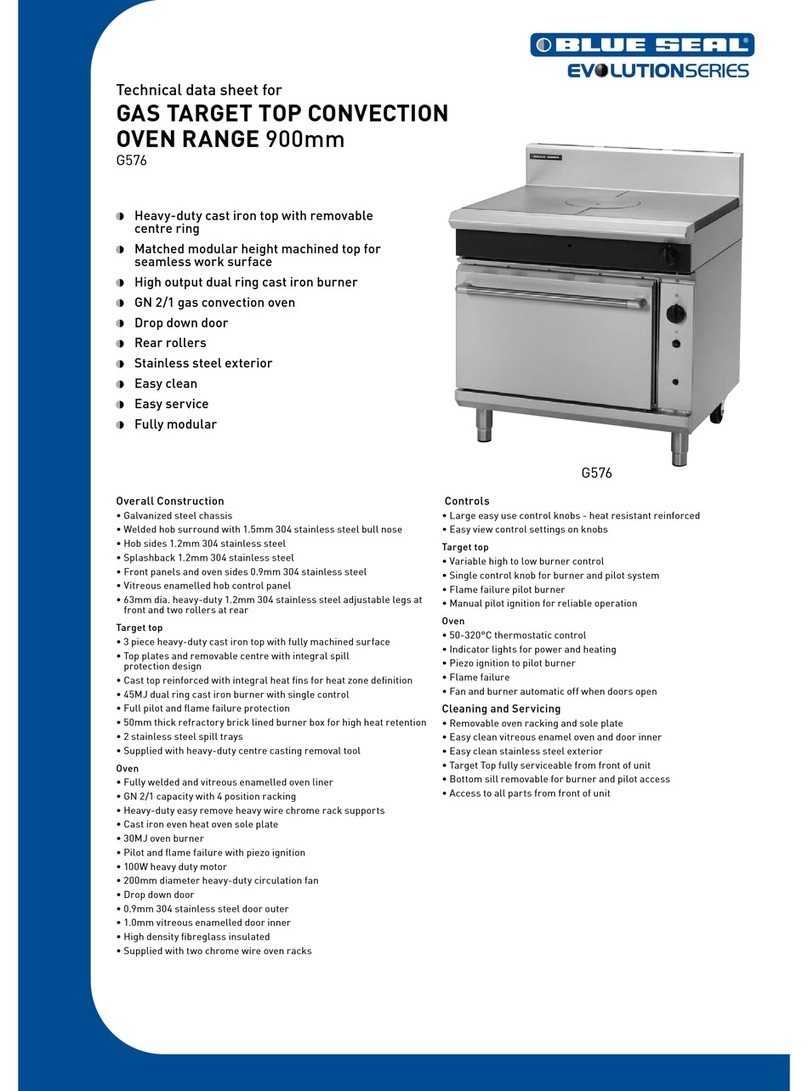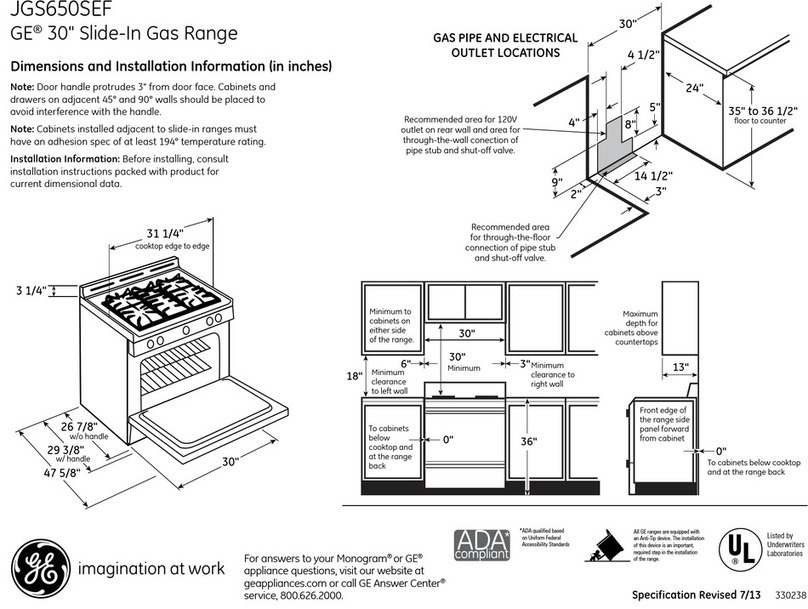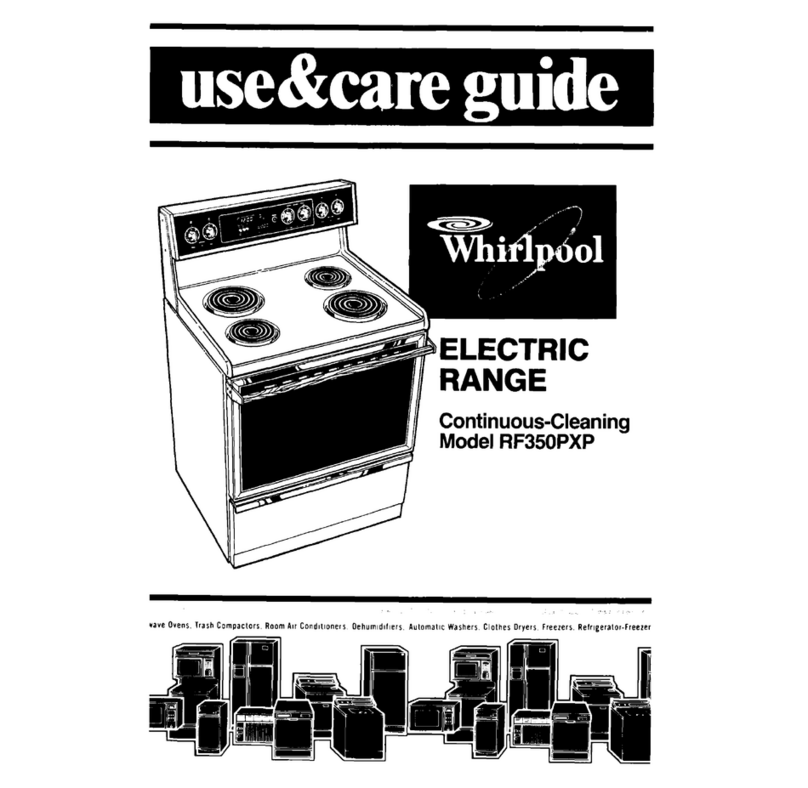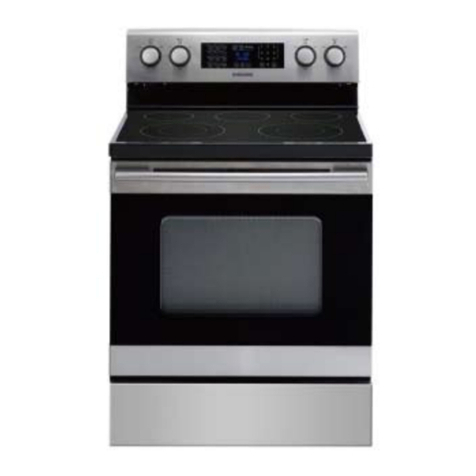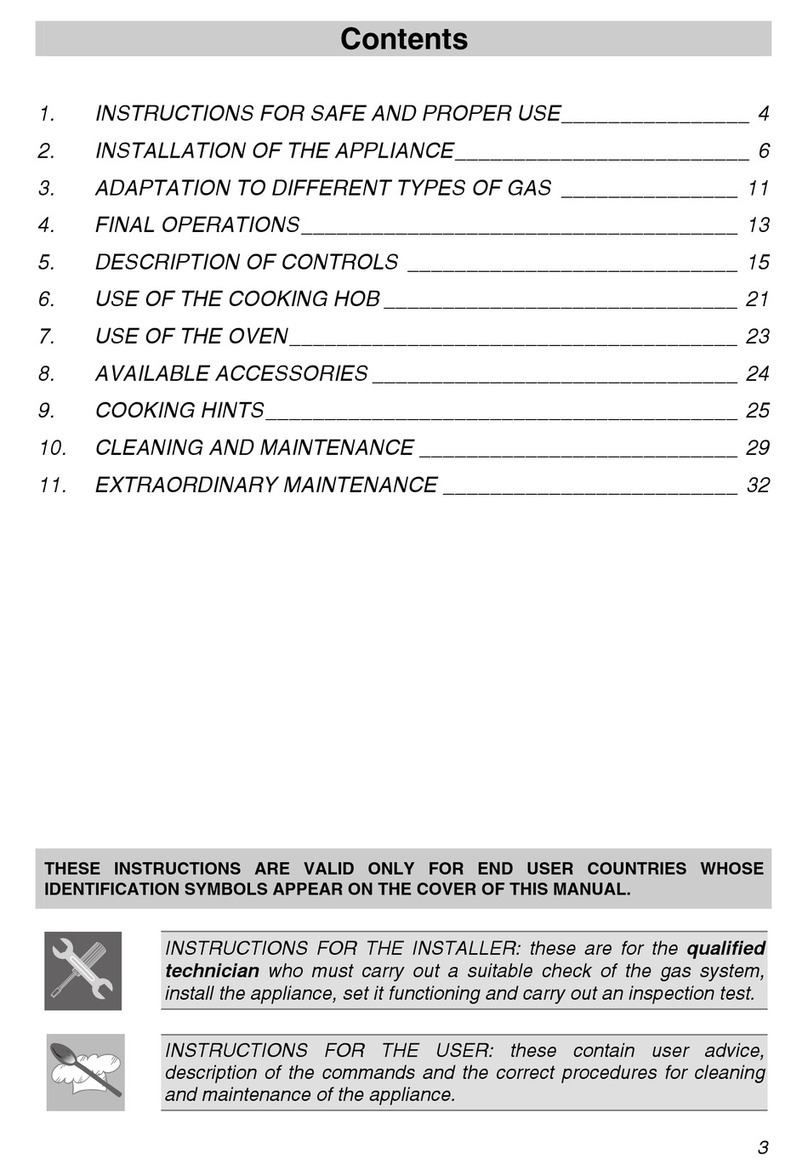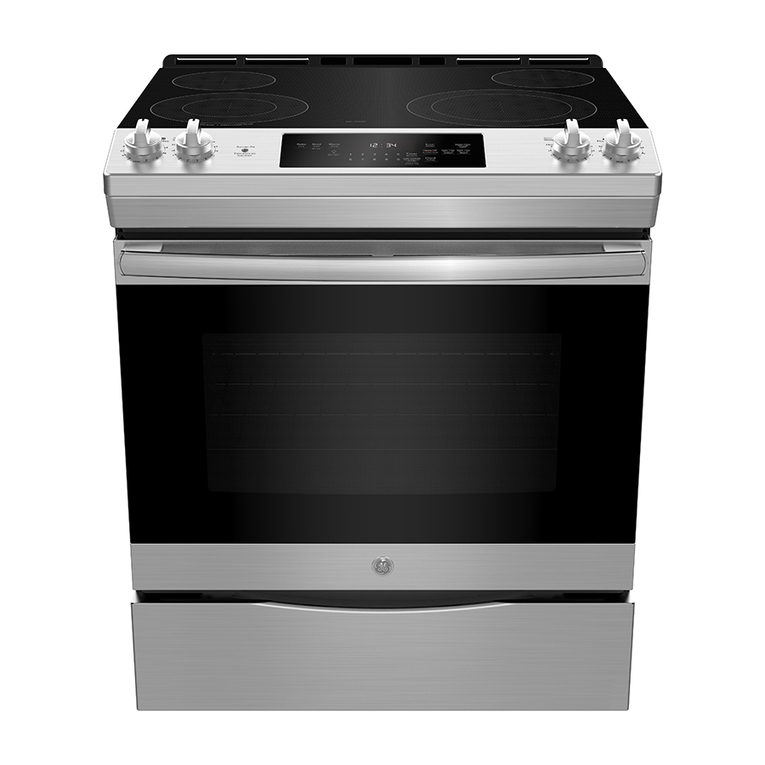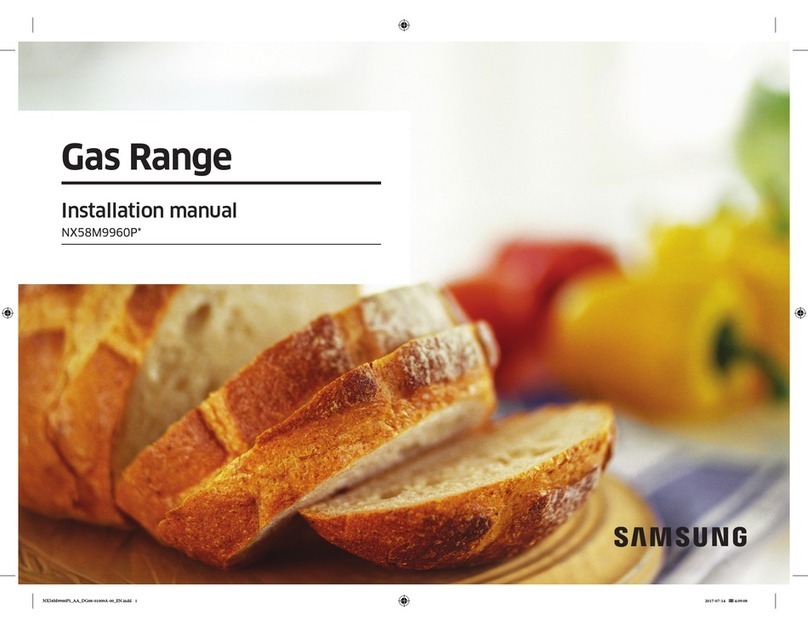5
10. The flame of the open-top burner should be adjusted to just cover
the bottom of the pan or pot. Excessive burner setting may cause
scorching of adjacent countertop surfaces, as well as the outside of
the utensil. This is based on safety considerations.
11. Use dry pot holders. Moist or damp pot holders on hot surfaces
may result in burns from steam. Do not let potholder touch hot
surface areas. Do not use a towel or other bulky cloth.
12. To reduce the risk of burns, ignition of flammable materials, and
spillage due to unintentional contact with the utensil, the handle of
a utensil should be positioned so that it is turned inward toward
the center of the range, and so that it does not extend over
adjacent burners.
13. Surface areas near burners may become hot enough to cause
burns. During and after use, do not touch areas near burners until
they have had sufficient time to cool.
14. No oven liner protection coating such as aluminum foil should be
used in or around any part of the oven. Improper oven liners may
result in a risk of electric shock or fire. Keep oven free from grease
build-up.
15. Once the unit is installed as outlined in the Installation Instructions,
it is important that the fresh air supply is not obstructed. Ensure
that the kitchen is well-ventilated. Keep natural venting holes
open or install a mechanical ventilation device. Prolonged or
intensive use of the appliance may call for additional (such as
opening a window) or more effective ventilation (such as increasing
the level of a mechanical ventilation if present).
16. The flueway must also
remain clear.
17. Storage cabinet area above
the unit must be 36” (91.4
cm) and cannot project
more than 13” (33.0 cm)
outward from the rear wall.
Beware of potential hazards
associated with retrieving
items from such cabinets
when the unit is in operation.
18. Keep area clean and free from combustible material, gasoline, and
other flammable liquids.
19. Do not heat unopened food containers; buildup of pressure may
cause the container to explode and result in injury.
4
IImmppoorrttaannttSSaaffeettyyIInnssttrruuccttiioonnss
1. Your unit should be installed by a qualified technician. The
appliance must be installed and electrically grounded according to
local codes. Have this technician show the the location of the gas
shut-off valve on the range so you know where and how to turn off
the gas if necessary. IINNMMAASSSSAACCHHUUSSEETTTTSS::AAllllggaasspprroodduuccttssmmuusstt
bbeeiinnssttaalllleeddbbyyaa““MMaassssaacchhuusseettttss””lliicceennsseeddpplluummbbeerroorrggaas
sffiitttteerr..
22..Do not attempt to repair or replace any part of this appliance
unless specifically recommended in this manual. All servicing
should be referred to a qualified technician. A qualified technician
is required for any adjustments or conversions to Nat. or LP gas.
3. The “push-to-turn” knobs of this range are designed to be child-
safe. However, children should not be left alone in the kitchen
while the range is in use. Do not store items of interest to children
over the unit. CCAAUUTTIIOONN::Children climbing to reach items could
be seriously injured.
4. GREASE is flammable and should be handled carefully. Do not
use water on grease fires. Never pick up a flaming pan. Smother
flaming pan by covering utensil completely with well-fitting lid,
cookie sheet or flat tray. Flaming grease outside of utensil can be
extinguished with baking soda or, if available, a multipurpose dry
chemical or foam type extinguisher.
5. Never leave the surface area unattended at high heat setting.
Boil-overs cause smoking and greasy spill-overs which may ignite.
6. If you are “flaming” liquor or other spirits under an exhaust, TTUURRNN
TTHHEEFFAANNOOFFFF..The draft could cause the flames to spread out of
control.
7. Wear proper apparel. Loose-fitting or hanging garments should
never be worn while using the appliance.
8. Never use your range for warming or heating a room. This is
based on safety considerations.
9. Use proper pan size. Select utensils having flat bottoms large
enough to cover the burner. Using undersized utensils allows the
flame to come up the side of the utensil, scorching the outside of
the utensil and making cleanup harder.
WWAARRNNIINNGG
To reduce the risk of fire, electrical shock, injury to persons, or damage
when using the oven, follow basic precautions, including the following:


